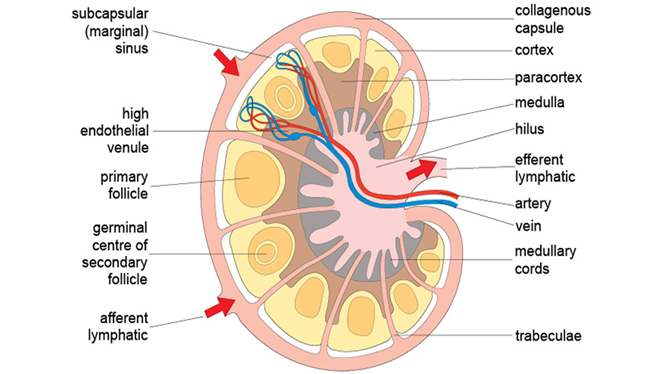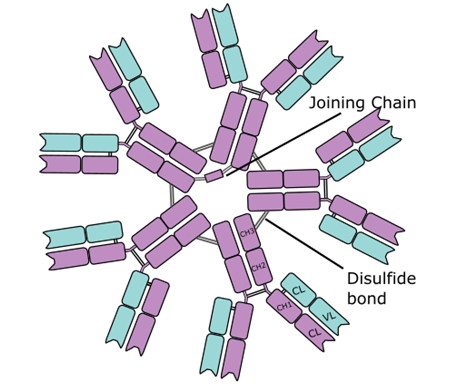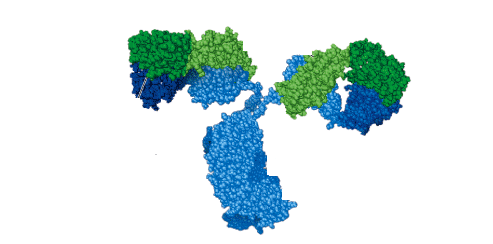Immunoglobulins do not actually kill or eliminate pathogenic microorganisms or antigens from the body. The role of antibodies during an infection is to bind specifically to invading pathogens so that the antigen-antibody complex so formed can be made readily available for other immune system action such as opsonization, phagocytosis, neutralization or complement fixation which ultimately spurs into action to kill and eliminate the bounded antigen from the system. And this is how the antibody-mediated effector function operates.
Antibodies or immunoglobulins have various isotypes. These isotypes or classes of immunoglobulins are known as isotypes because they are variants of the main immunoglobulin molecule (i.e. immunoglobulin G). And each of these isotypes of classes or immunoglobulins is differentiated by their distinctive amino acid sequences which are known to line the heavy chain constant region of the antibody molecule.
The different immunoglobulin isotypes also have different subclasses which vary in different animal species. Differences in the heavy chains of each of the immunoglobulin isotypes are usually used to characterize the different Ig subclasses. Human beings for example have four subclasses of immunoglobulin G (IgG) viz: IgG1, IgG2, IgG3 and IgG4.
Immunoglobulins also have allotypic determinants and idiotypic determinants aside the different isotypes of antibodies known. The allotypic determinants also known as allotypes are antigenic determinants mainly found in the constant regions of immunoglobulins. The idiotypic determinants or idiotypes are antigenic determinants found in the variable regions of antibodies. The five major classes or isotypes of immunoglobulins are differentiated from each other by the type of heavy (H) chain found in the antibody molecule.
- Immunoglobulin A (IgA): IgA has alpha (α) heavy chain.
- Immunoglobulin M (IgM): IgM has mu (µ) heavy chain.
- Immunoglobulin D (IgD): IgD has delta (δ) heavy chain.
- Immunoglobulin E (IgE): IgE has epsilon (ε) heavy chain.
- Immunoglobulin G (IgG): IgG has gamma (γ) heavy chain.
REFERENCES
Abbas A.K, Lichtman A.H and Pillai S (2010). Cellular and Molecular Immunology. Sixth edition. Saunders Elsevier Inc, USA.
Actor J (2014). Introductory Immunology. First edition. Academic Press, USA.
Alberts B, Bray D, Johnson A, Lewis J, Raff M, Roberts K and Walter P (1998). Essential Cell Biology: An Introduction to the Molecular Biology of the Cell. Third edition. Garland Publishing Inc., New York.
Bach F and Sachs D (1987). Transplantation immunology. N. Engl. J. Med. 317(8):402-409.
Barrett J.T (1998). Microbiology and Immunology Concepts. Philadelphia, PA: Lippincott-Raven Publishers. USA.
Jaypal V (2007). Fundamentals of Medical Immunology. First edition. Jaypee Brothers Medical Publishers (P) Ltd, New Delhi, India.
John T.J and Samuel R (2000). Herd Immunity and Herd Effect: New Insights and Definitions. European Journal of Epidemiology, 16:601-606.
Levinson W (2010). Review of Medical Microbiology and Immunology. Twelfth edition. The McGraw-Hill Companies, USA.
Roitt I, Brostoff J and Male D (2001). Immunology. Sixth edition. Harcourt Publishers Limited, Spain.
Zon LI (1995). Developmental biology of hematopoiesis. Blood, 86(8): 2876–91.
Discover more from Microbiology Class
Subscribe to get the latest posts sent to your email.





